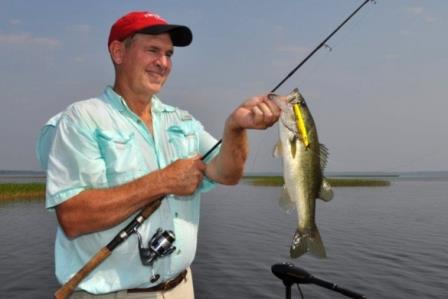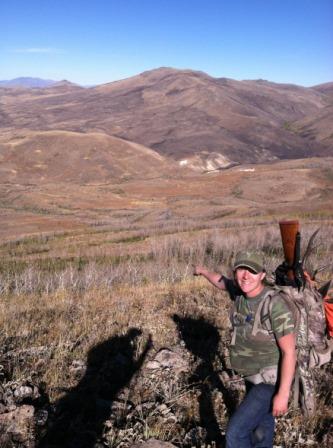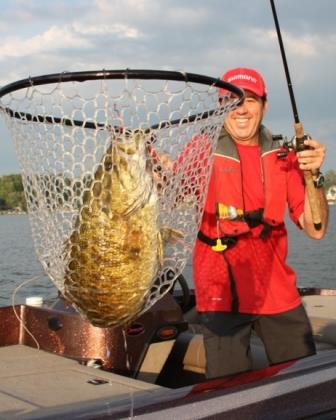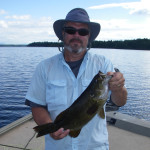By Tracy L. Schmidt
A turtle chowder recipe — it’s so good
they’ll ask for more!
Once a staple for rural families in summer, turtle chowder is still a delicacy if you know how to fix it. But first comes cleaning the turtle.
Cleaning the Turtle
Snapping turtles are not a snap to clean. However, if you take your time, you can put a good amount of meat on the dinner table. The size of the turtle means everything. We love the occasional meal of turtle soup or (better yet) fried snapping turtle, but it takes one really large or two medium-sized ones to make it worth the time and effort.
Tools you’ll need:
- A sharp pair of tin snips
- A vise-grip
- 6-inch fillet knife
- Boning knife
- Bone or hack saw (optional)
(The Havalon Baracuta covers all those needs.)
Dispatch the turtle with one of two methods. Either administer a .22-shot to the base of the brain (right behind the eyes), or merely cut the turtle’s head off like you would if you were butchering a chicken.
A hatchet works OK for the latter, but my husband Dan has found it most efficient to use a very sharp boning knife. Use a vice-grip and grab the turtle by the mouth. Pull its head out of the shell, extending the neck as far as possible. This is key: Do NOT chop the neck off. Instead, use your knife to feel for the start of the neck behind the boney head. Cut the head off where it meets the neck. You will get a preponderance of meat from the neck. Chopping the head off with an ax or hatchet will ruin some of the meat. It’s best to use a really sharp knife and only cut off the skull (not the neck).

Chrisanthia Schmidt learned how to prepare all sorts of wild game that her husband Dan Sr. brought home while raising their seven children in southeast Wisconsin. She was a master venison cook, but also enjoyed making unique dishes like snapping turtle soup. (Photo: Tracy Schmidt)
Another warning: turtles die fast, but the nervous system stays wired for quite some time. You’ll want to hang your dispatched turtle for several hours before attempting to butcher the carcass. If you want to speed up the process, place the entire turtle in a large cooler filled with cubed or crushed ice.
Most of a turtle’s meat comes from the neck and the legs. In terms of meat, there is nothing else to a turtle until you get to the inside of the shell. (More on that later.)
After removing the neck, remove each leg as close to the inner joint (inside the shell) as possible. You’ll need your tin snip shears to break free the connective bones that attach the top shell to the bottom shell. Inside the top shell you will see a white fillet of meat on each side. Think of these as turtle tenderloins. They are to be prepared separately. Deep fried is best. These fillets are almost fish-like, and oh-so delicious. Use your shears to remove the top and bottom ribs (there are several of them) that hold in the fillet. Then, carefully use your fillet knife to scoop out the fillets. These fillets are not easy to remove, and they are almost not even worth trying to remove on smaller turtles. The best eating-sized turtles have shells that measure more than 16 inches. Some states have arbitrary rules on shell length and do not allow anglers to keep turtles over a certain size. You may think it’s a ridiculous rule, but be sure to check your regs before bringing home turtles for the dinner table.
If you are only interested in making soup, place the fillets aside in the fridge and then go to work on the legs and neck. Wash with clean, cold water for several minutes. Scrub with a clean brush if needed. Place all of the turtle meat in a glass bowl and let it cool in the fridge overnight. When you are ready to make your soup, bring a pot of water to a low boil and add the neck and legs. Par-boil these parts for about an hour, or until meat pulls easily from the bone. When the meat is soft and pulls, remove pot from the stove and allow the meat to cool. It’s OK to rinse with cold water to speed up the process. Once cool, peel the skin away from the meat. Place pieces of meat into a stock pot. It’s now soup-making time.
We have experimented with skinning the neck and legs during the initial butchering process, but it hasn’t worked. We prefer to par-boil them, which also allows for the removal of any fatty parts which, surprisingly, some turtles have!

A handwritten family recipe is a tie that binds us from generation to generation. (Photo: Tracy Schmidt)
Chrisanthia Schmidt’s Turtle Chowder
Family recipes that pass from generation to generation are a treasure. We love to eat our favorite foods from our childhood and remember our shared meals and the people who prepared them for us. We hope you enjoy this handed down Schmidt family recipe.
Ingredients:
4-6 slices of bacon
1 large onion, chopped
2 cups potatoes, cubed
2 pounds turtle meat, chopped
1/2 teaspoon salt
1 cup broccoli, chopped or carrot, diced
Dash of pepper
2+ cups of milk or half-n-half
1/4 cup flour
Fry the bacon in a stockpot until it is cooked. Remove from pot and cool, then crumble into pieces. Add the onion, potato and chosen vegetable and cook until soft, then add the turtle, seasoning and bacon. Whisk together milk and flour. Add to the stockpot and simmer for 15 minutes.
Serves: 4
About Tracy L. Schmidt:
 Tracy L. Schmidt is a certified master food preservation specialist and the author of the book “Venison Wisdom.” Each of her recipes is tested and perfected. She is married to Daniel Schmidt, editor in chief of Deer & Deer Hunting magazine and host of “Deer & Deer Hunting TV” on NBC Sports. Tracy enjoys the versatility of Havalon Knives in both the kitchen and the field.
Tracy L. Schmidt is a certified master food preservation specialist and the author of the book “Venison Wisdom.” Each of her recipes is tested and perfected. She is married to Daniel Schmidt, editor in chief of Deer & Deer Hunting magazine and host of “Deer & Deer Hunting TV” on NBC Sports. Tracy enjoys the versatility of Havalon Knives in both the kitchen and the field.
Enter our “Gear Up for the Hunt”
sweepstakes for your chance to win the hunt
of a lifetime! Click here:
5,837 total views, no views today




























